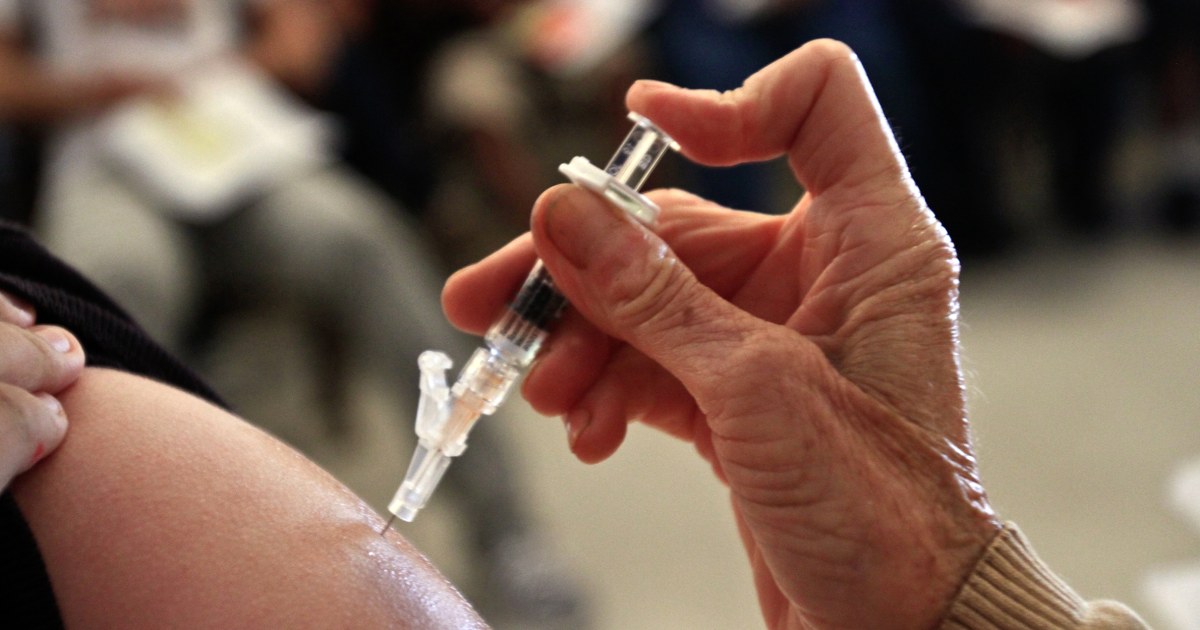The United States is experiencing more than four times as many cases of whooping cough compared to last year — a spike that some experts attribute to post-pandemic vaccine fatigue.
“With the increased hesitancy to vaccination that is ongoing since the Covid-19 pandemic, we are seeing outbreaks in children who are not vaccinated,” said Dr. Tina Tan, president-elect of the Society of Diseases Infectious of America.
Thursday, the Centers for Disease Control and Prevention said 14,569 cases of whooping cough have been reported so far in 2024. That’s a significant increase over last year’s total of 3,475 cases.
According to a CDC spokesperson, the preliminary cases reported so far this year are the highest since 2014.
The bacterial disease is officially called pertussis, but it is often called “whooping cough” because of the sound that people – especially children – make when they try to get enough oxygen despite ongoing coughing fits.
Doctors said the newly reported numbers are likely a vast underestimate of the true spread of the highly contagious respiratory infection.
“For every case of whooping cough that we find, there are probably 10 of them that don’t get medical attention,” said Dr. Jim Conway, a pediatrician and infectious disease expert at UW Health in Madison, Wisconsin.
The new numbers are a sign that cases of covula are returning to pre-pandemic levels, when approx. 10,000 cases have been reported annually, nationallyWelcome to WHO. Growing anti-vaccine sentiment is contributing to the outbreaks, experts say.
“We have seen an increasing amount of diseases occurring in teenagers and the adult population because they are not vaccinated as they should be,” said Tan.
This is an age group that can be particularly vulnerable if they have not received a cough booster since childhood. Protection from pertussis vaccines does not last forever; in fact, boosters are needed every 10 years, according to the CDC.
Some areas of the country are seeing massive spikes. U Wisconsin Department of Health Servicesfor example, he said on Thursday that the cases of pertussis are 10 times higher than last year, with 625 cases confirmed in 2024 compared to 51 in 2023.
“While people can get pertussis at any age, Wisconsinites ages 11 to 18 currently make up nearly half of all cases reported so far this year,” the state health department said in a news release.
“This is growing very quickly,” Conway said. “That worried us.”
Cases are also on the rise in Connecticut. “I don’t think we’ve seen that many in over 15 years,” said Dr. Andrew Carlson, pediatrician and medical director for primary care at Connecticut Children’s in Hartford. The state has recorded 111 cases of mumps this year so far, compared to just 11 in 2023.
Doctors at Duke University School of Medicine in North Carolina and the National Children’s Hospital in Washington, DC, told NBC News that they had not seen any recent cases of covula. Georgia saw an increase in cases of whooping cough during the summer, said Dr. Andi Shane, division chief of pediatric infectious diseases at Children’s Healthcare of Atlanta, but it has since declined.
In the areas that have been affected, outbreaks have occurred among teenagers and young adults, including at Philadelphia High School in April. Last weekend, Portland State University canceled a football match after an increase in cases of covula among players.
“During the spring, we saw a high proportion of cases in teenagers,” said Dr. Karen Ravin, division chief of infectious diseases at Nemours Children’s Health in Delaware. “The vaccine is effective, but immunity declines over time, so it’s important for parents to make sure their children are up to date with their vaccines.”
The “heart” side of the covula
People with a persistent cough can go to the doctor, but be sent home after testing negative for the flu or Covid. Whooping cough can spread that bacteria through their coughs for a long time if left untreated.
“You can kill this bacteria for three or four weeks,” Conway said. “Once you get into a community, it’s pretty hard to stamp it out.”
Most older children and otherwise healthy adults who are infected do not experience much more than that annoying cough.
Doctors worry most about newborns who are infected. Their tiny airways can’t handle the coughing fits associated with whooping cough, and they are often put on ventilators to help them breathe.
“That’s the heartbreaking side of it,” Conway said. “These children are coughing so much that they can’t eat, they can’t drink, so they end up in the intensive care unit.”
When to get vaccines and cough boosters
Pregnant women are encouraged to take a cough booster during the third trimester. This gives their babies a certain level of protection when they are born – when they are most vulnerable to pertussis – and before they are eligible for the shots themselves.
Babies should start their first round of pertussis vaccines at 2 months, with follow-up vaccinations at 4 and 6 months, Welcome to WHO. It is the DTaP vaccine, which helps protect against three diseases: pertussis, diphtheria and tetanus.
Another shot is given before the child reaches the age of 2 years, and again around the beginning of kindergarten.
The vaccine works well against diphtheria and tetanus, but is less effective over time for pertussis.
This is why boosters are recommended approximately every 10 years, starting in the tweens, as children begin middle school.
“I can’t stress the importance of vaccination,” Shane said. “The way we’re going to make sure we all have a successful respiratory season is to do everything we can to protect ourselves.”
